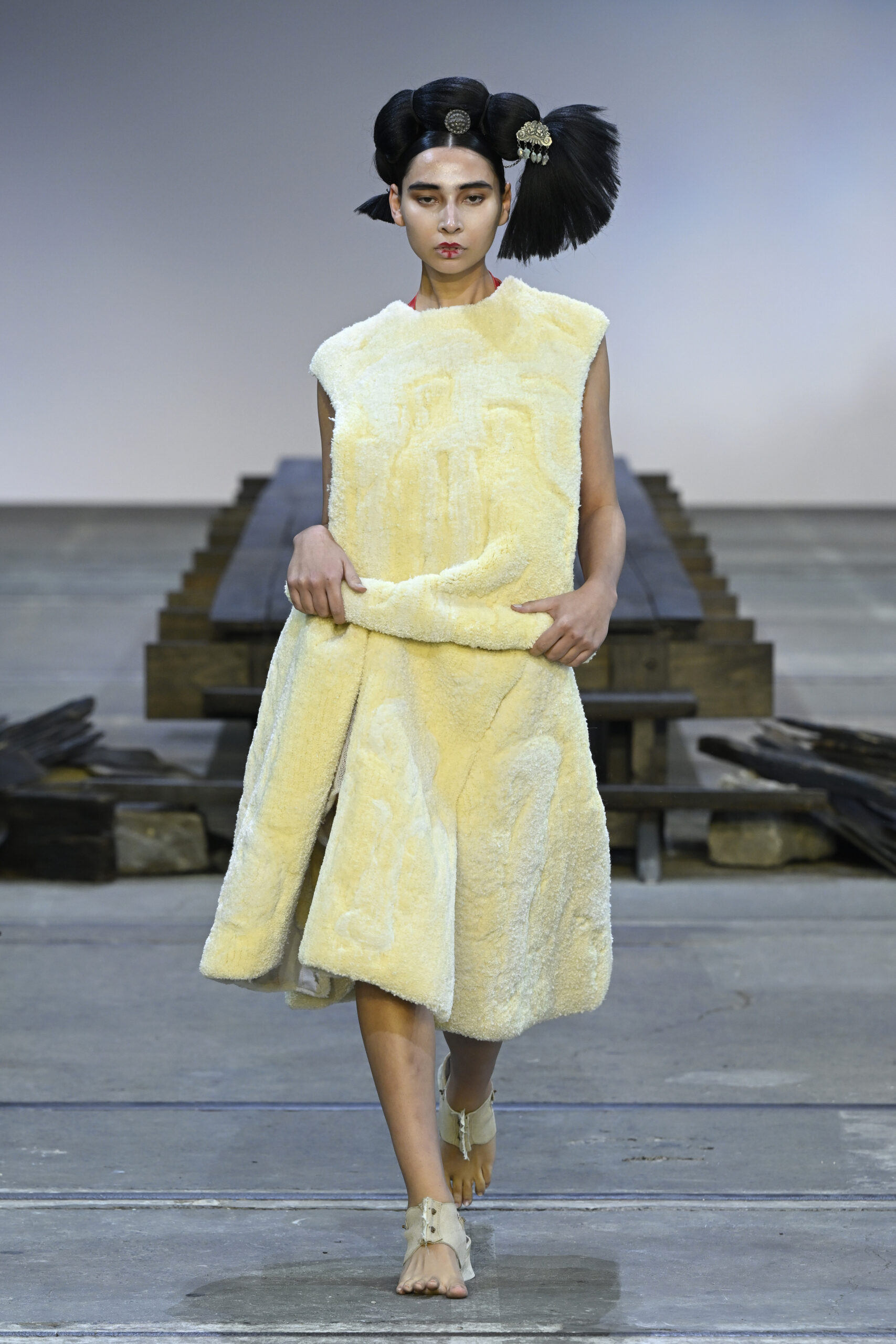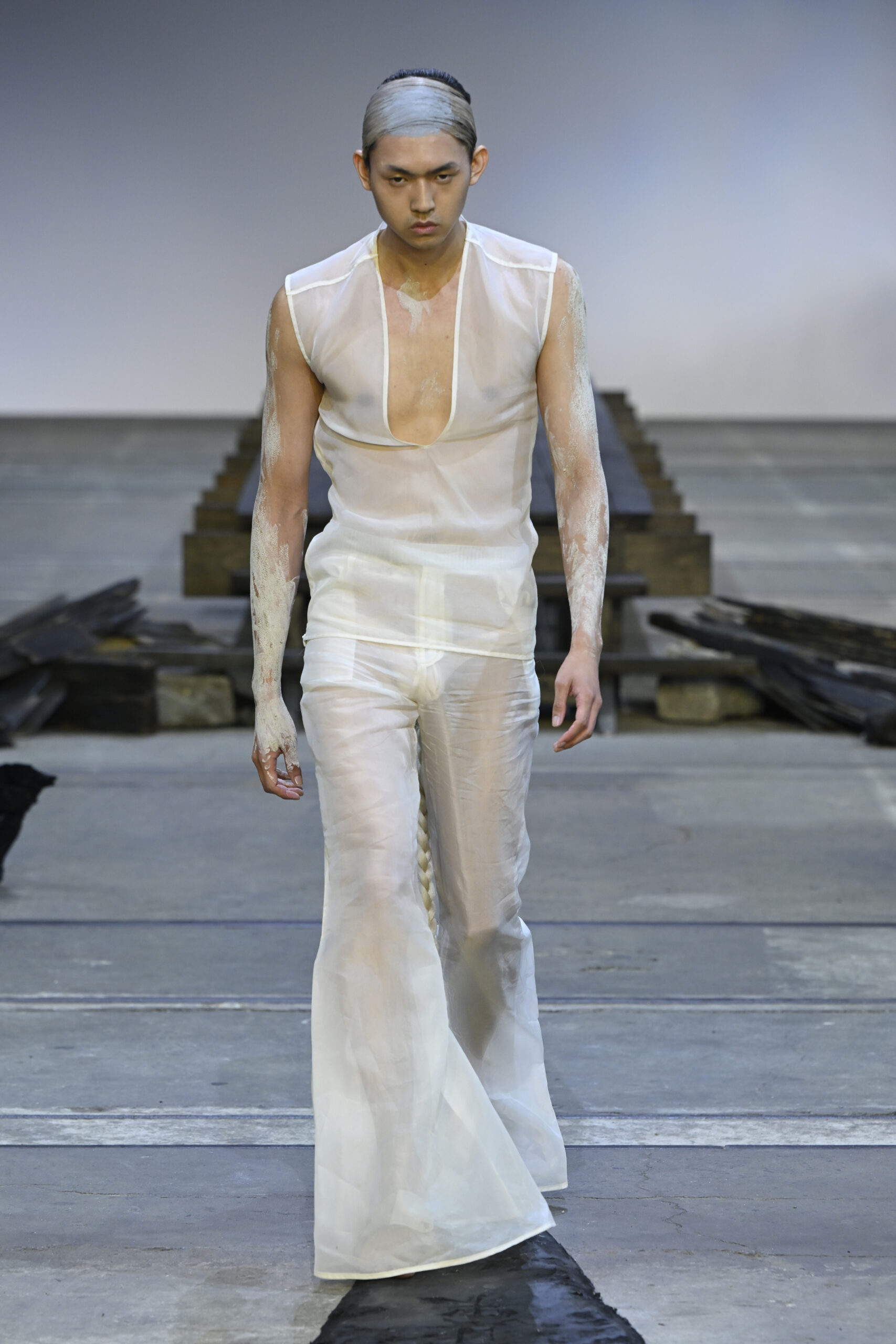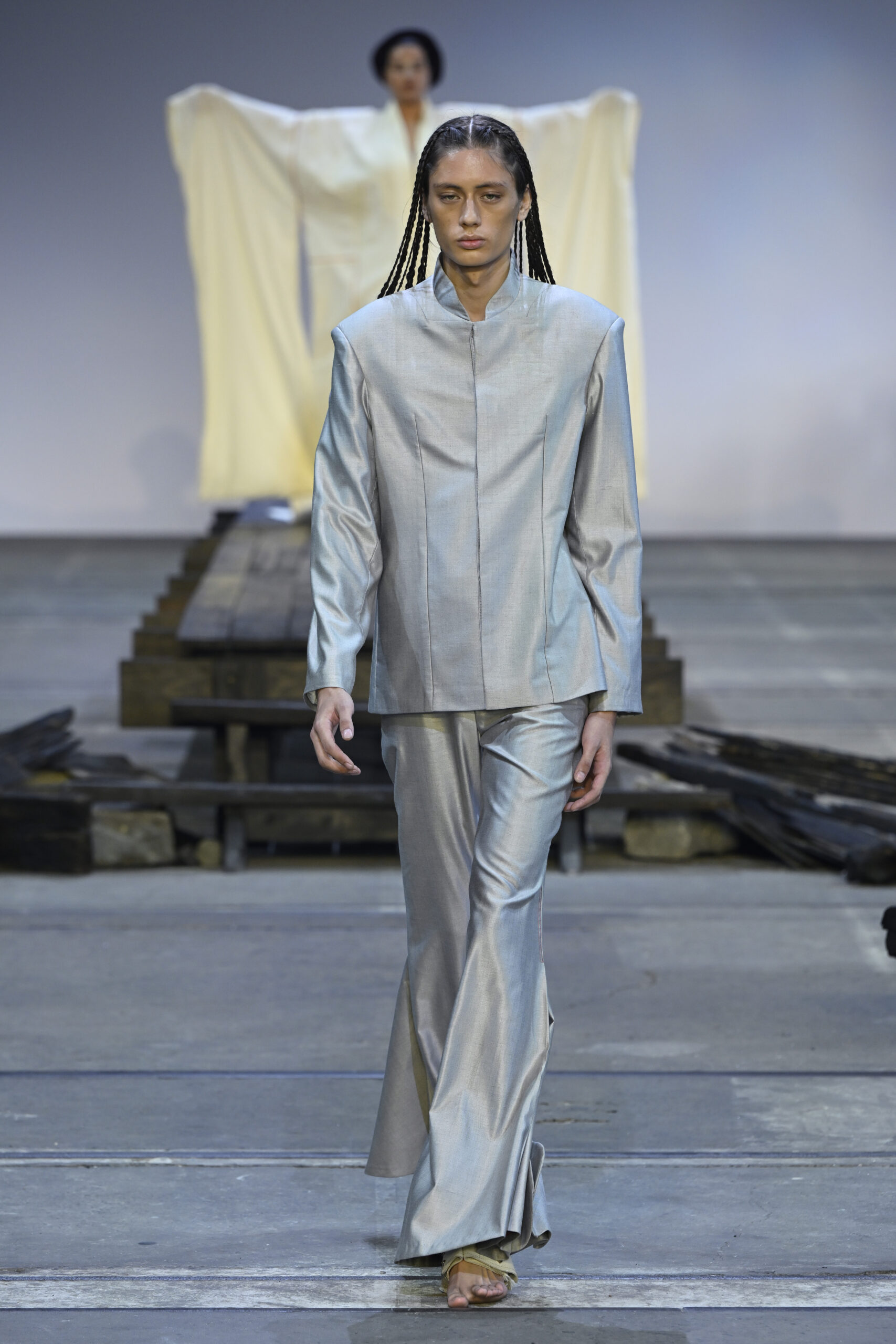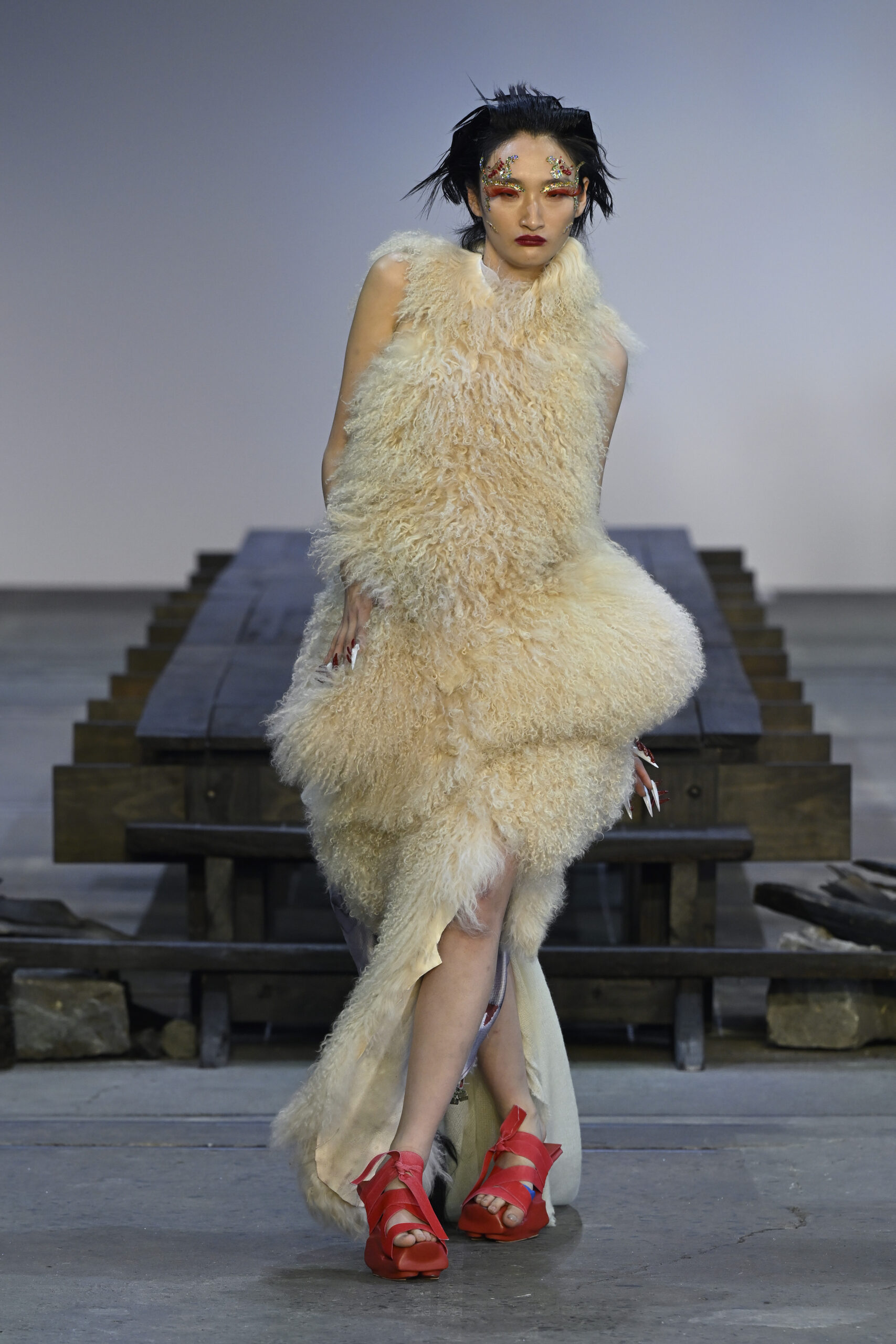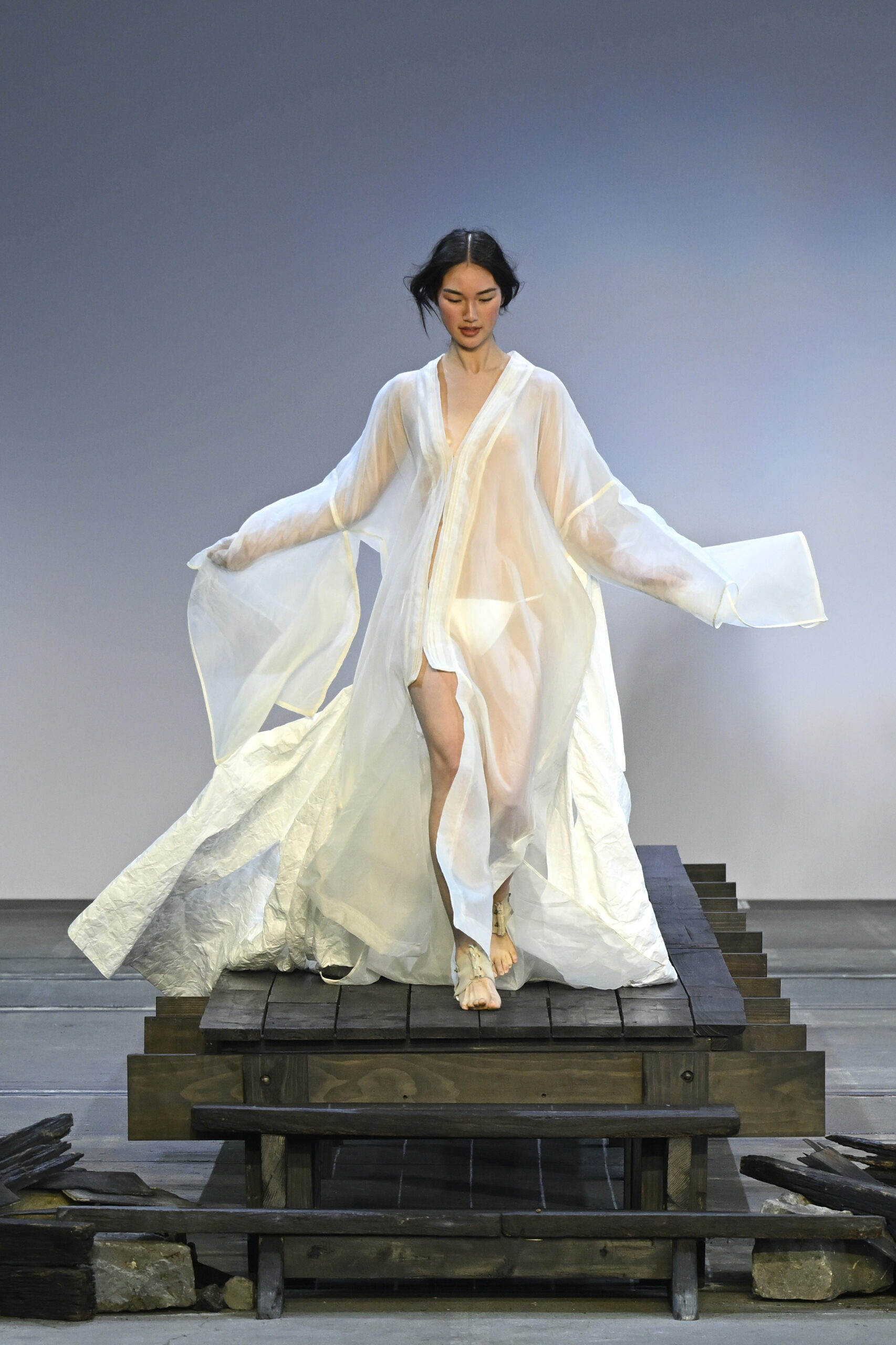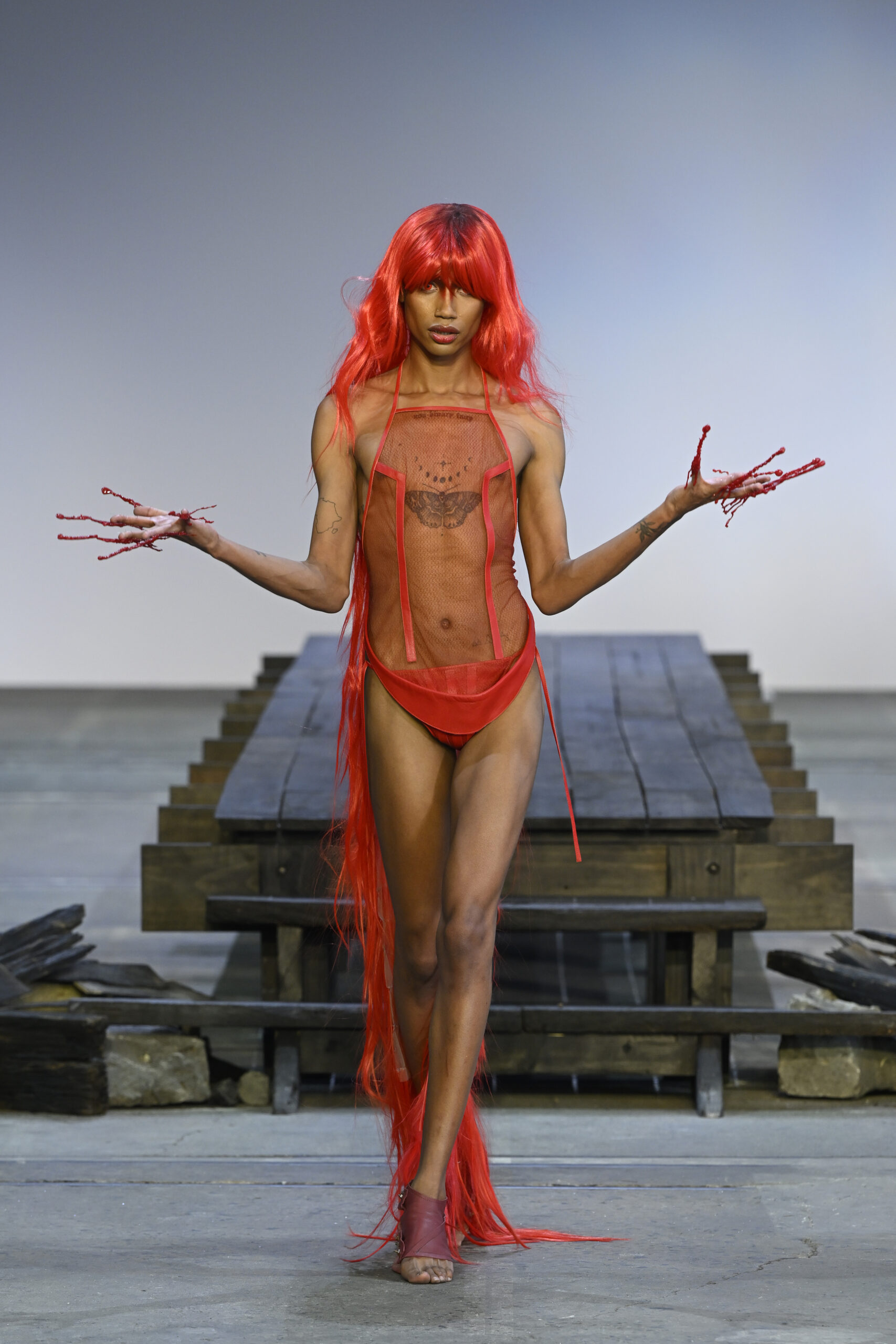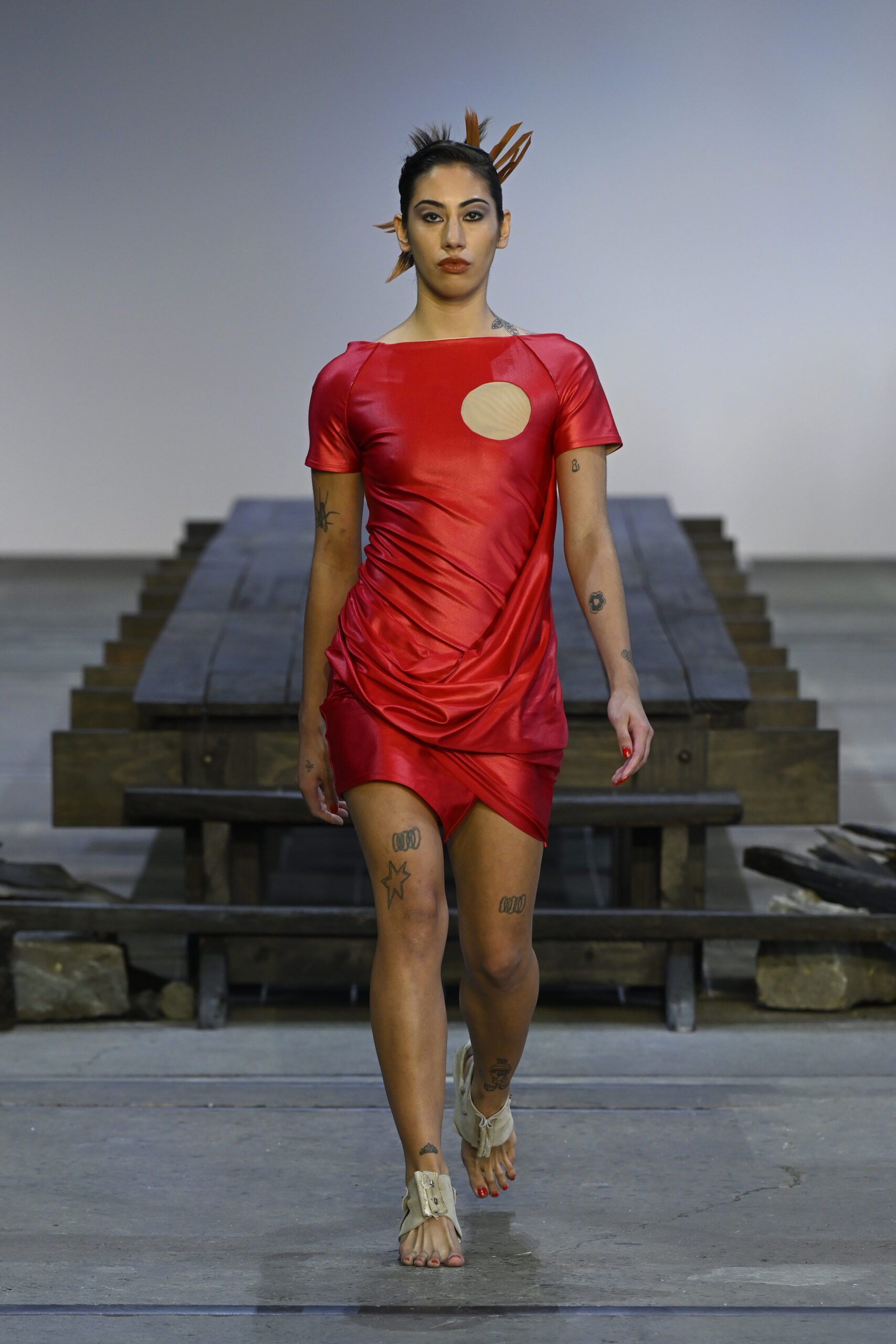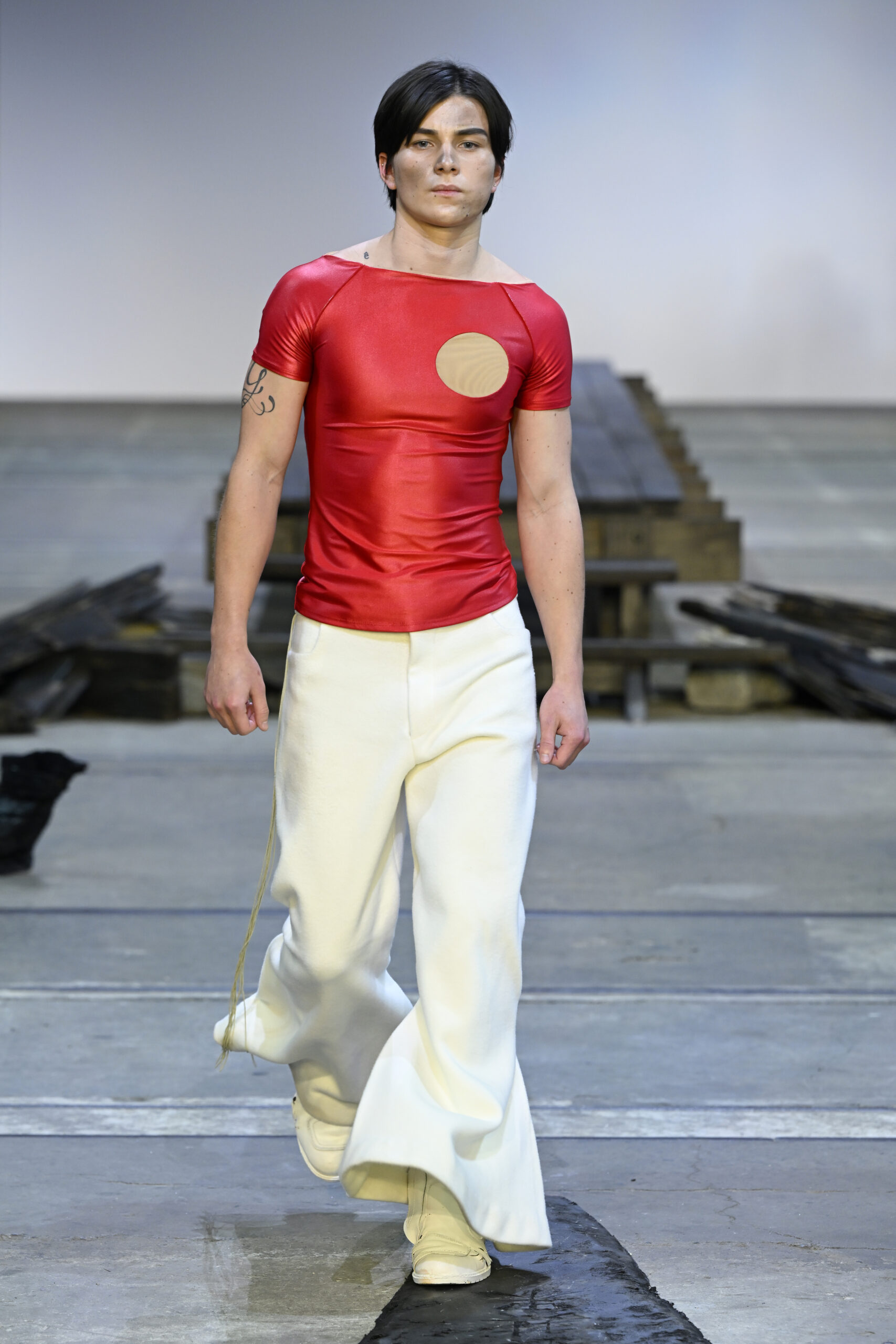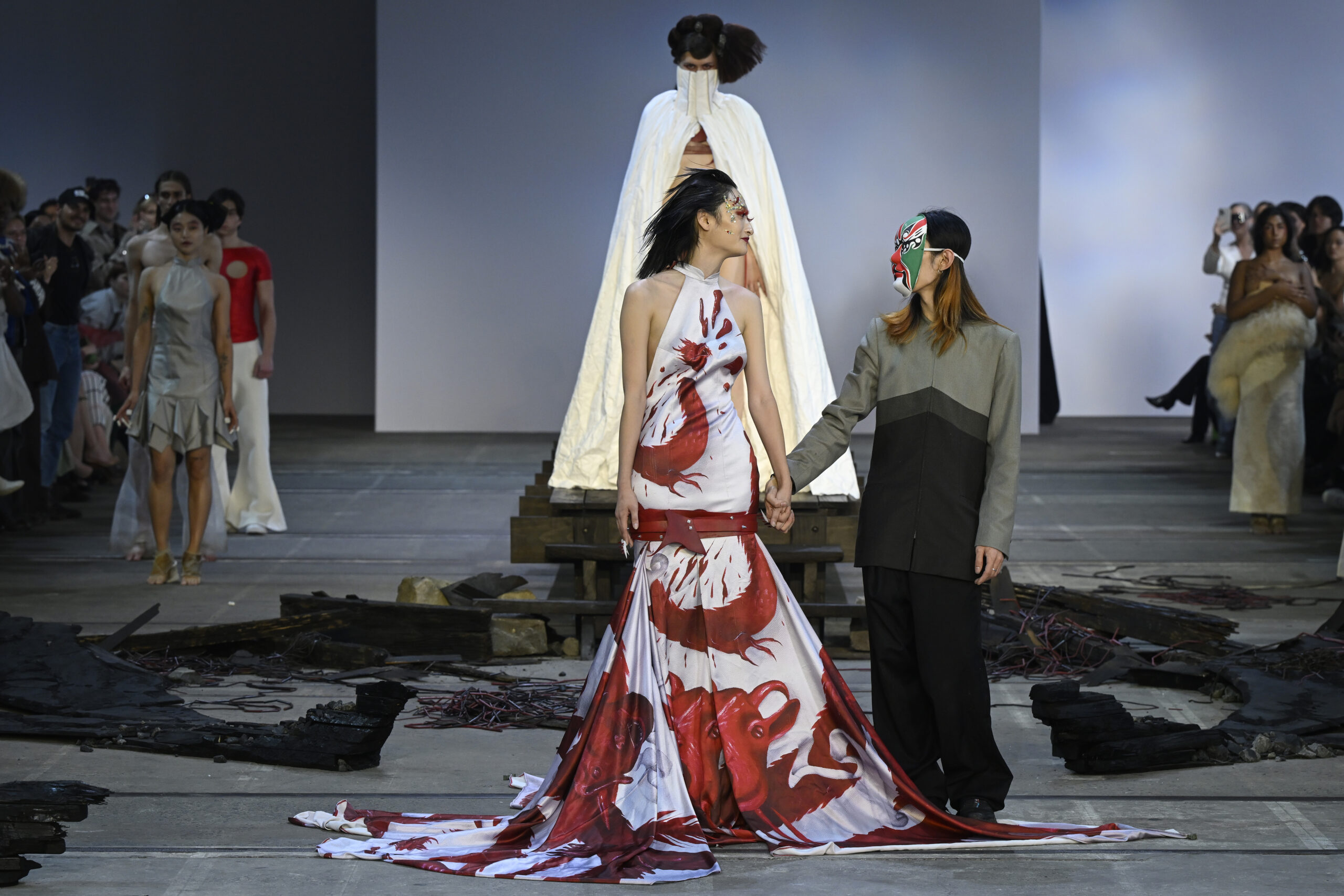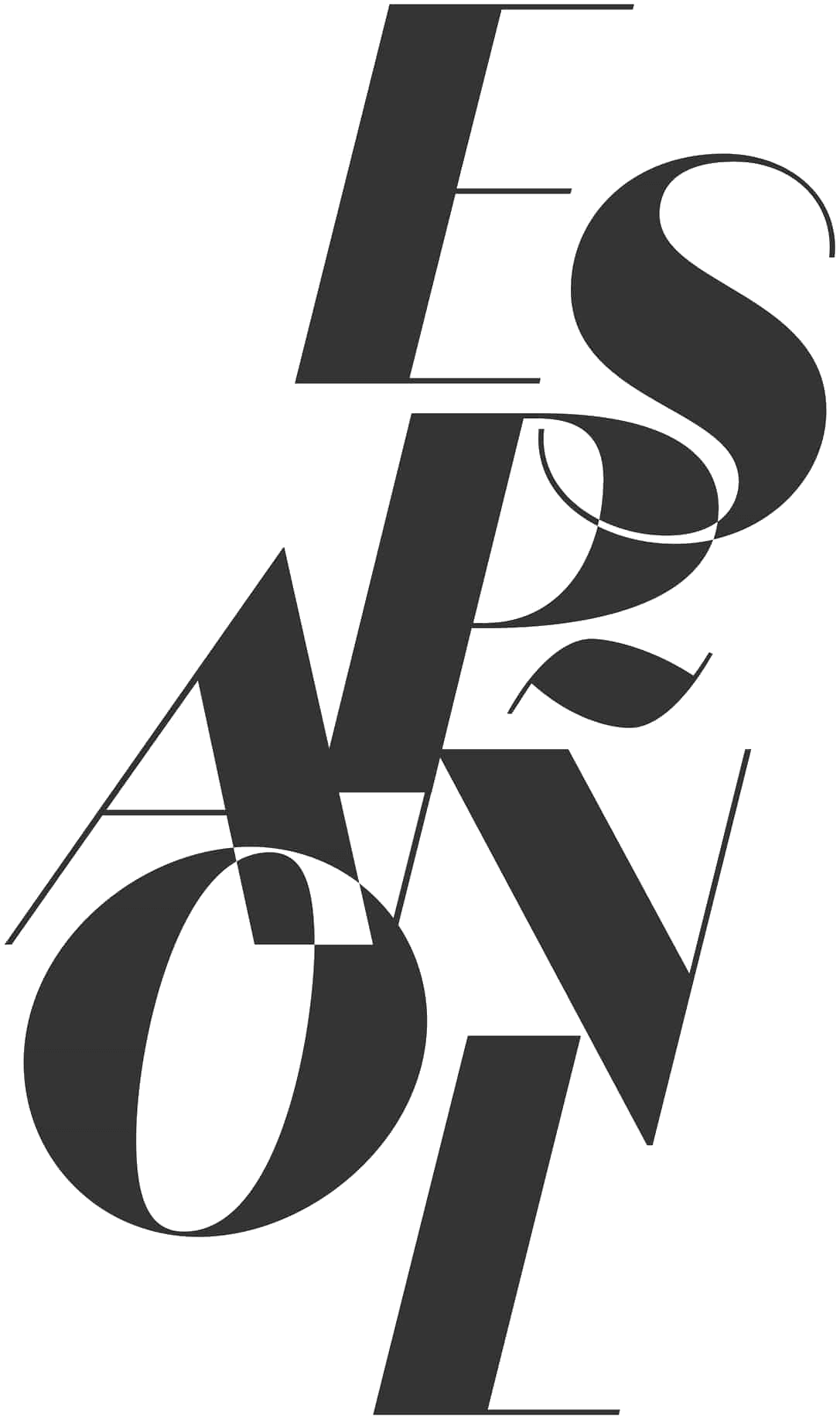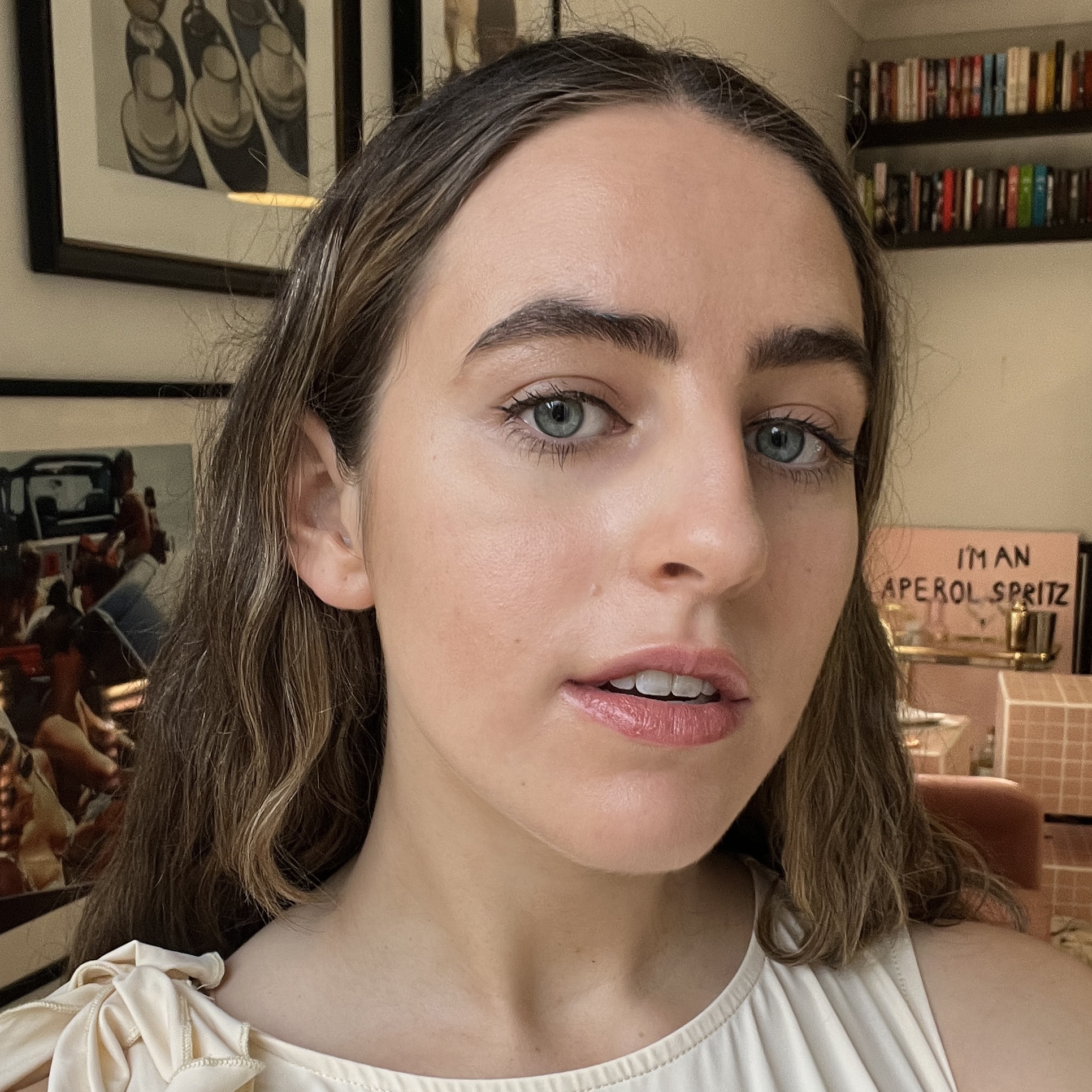News feed
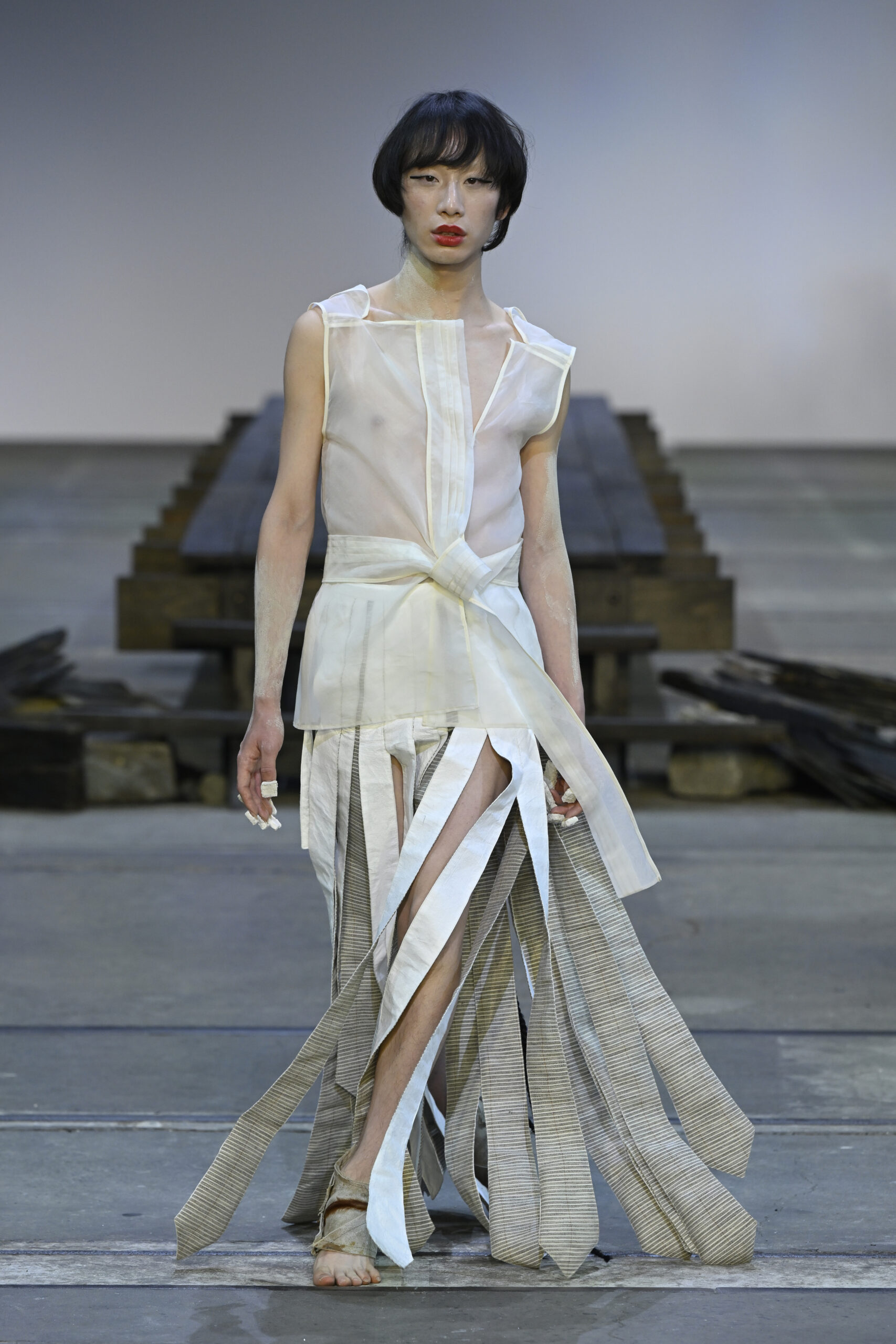
Carriageworks was not a former railway workshop turned creative arts space on Day 5 of Australian Fashion Week. Instead, Australian-Chinese label Wackie Ju took us to its rendition of Yuanmingyuan or “The Old Summer Palace”, an 18th Century Imperial Garden looted and destroyed by British and French forces. Drawing inspiration from what the brand’s founder and designer, Jackie Wu, describes as the “tragic history” of the site, the emerging label offered the most theatrical show on the schedule by musing on destruction, decadence and the fragility of beauty. A lesson in history, indeed.
This show felt akin to the atmospheric reverence of Alexander McQueen’s Spring/Summer 2006 collection (‘The Widows of Culloden’) in which the late British fashion maven mined his heritage and mythologized himself as a showman and performance artist, not just a designer. Similarly, Wackie Ju’s Resort ‘25 collection, which is titled ‘Saviour’, was an almost autobiographical affair, recounting the memories of her youth (“Yuanmingyuan—my favourite ancient cultural sightseeing spot growing up”), the sacrality of place and the dark beauty in ruins.
So, how does one translate an evening in China’s history for Sydney’s industrial suburban heart? You place a charcoal wooden runway surrounded by precarious and blistered sculptures in the shape of Wackie Ju’s flower logo, designed by Amber Kerr and Kaya Beagley, to convey a brutalist approach and confer the decayed architecture. You unleash a soundscape of piercing tones and intense rhythms, crafted by Elyshia Weatherby, to provide a glamourised reality of the chaotic event. You perfume the atmosphere with the scent of burnt embers to prepare audience members for cruel confrontation. Only then can you set your collection forth.
The show opened with equal theatrics as a model wearing a high-neck ivory silk cape stalked down the makeshift boardwalk before flinging her robes open to unveil a sultry two-piece red lingerie set. Despite drawing reference from modern antiquity, the pieces felt discernibly modern and almost futuristic, especially the gauzy and diaphanous sheaths and trousers that followed. This unfolded into a backless midi dress made from shearling and held up with red latex straps. Contemporary Qipao and Hanfus, traditional Chinese garments, felt at peace amongst the silver tailoring, chrome suiting and ivory tailoring, too.
As an operatic gesture, each model crept around the stage to convey an act of fear and being hunted. Without context, these movements felt animalistic, as if remaining beings crawling the plains after a scorched earth. This was a decisive move, with movement director Amy Zhang choreographing this dance of ancient memory. This was the most profound in the closing look. What began with a model in shearling wrap concluded with the outer layer torn to shreds by ominous encroaching figures who stormed the runway and plundered the piece, leaving behind a beautiful halter neck dress adorned with the image of a bloodied dragon.
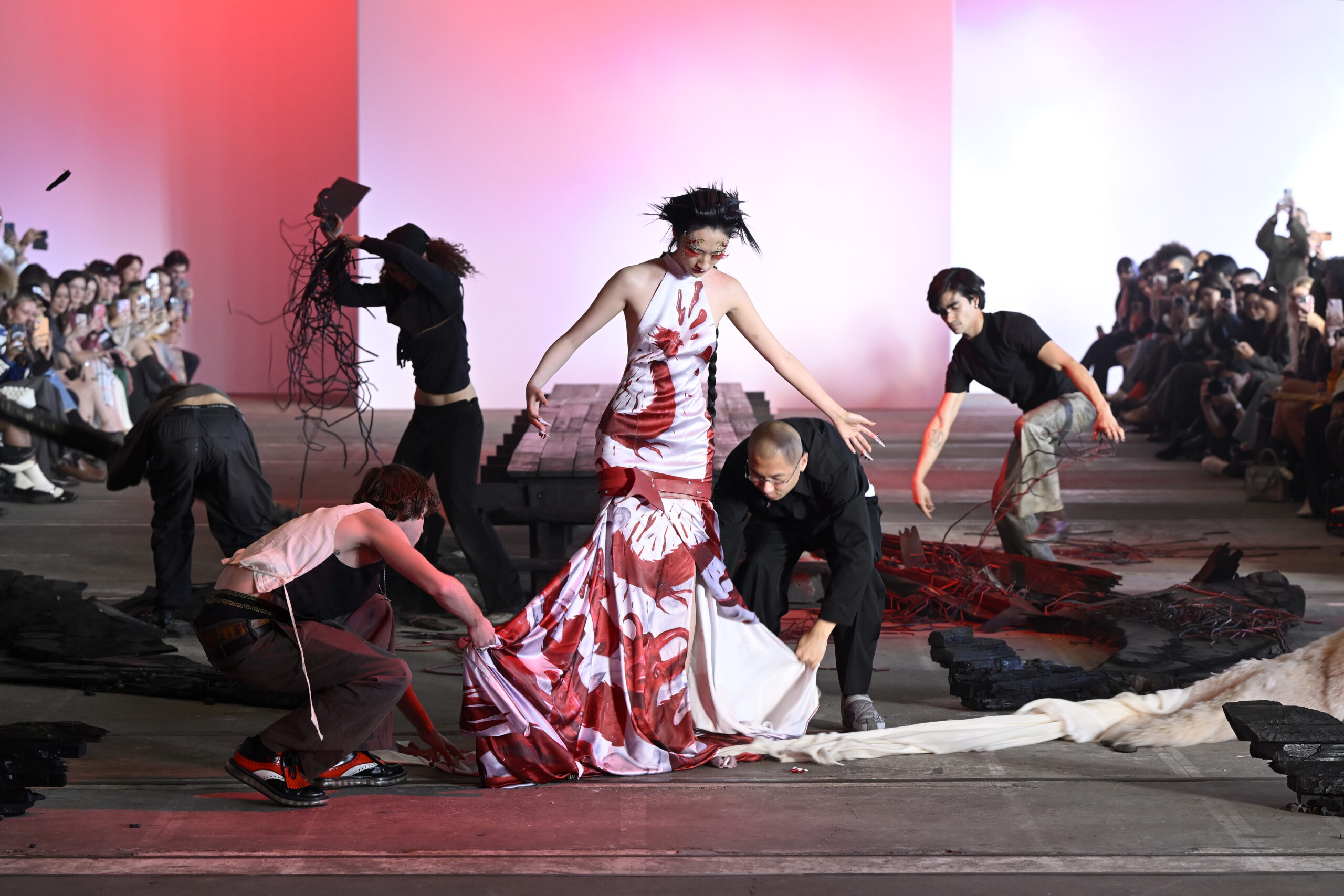
“This collection surrounds a true historical event that holds a lot of trauma for so many people, it was crucial that our team and models could translate the feelings accurately,” explained Ju. Anguish, despair, ego and loss were widespread. But so was hope. “This act is a tribute to my ancestors and a way of reclaiming our family’s history. Beyond aesthetics, it symbolises a journey of healing, forgiveness, and embracing our differences,” said Ju. It’s also a beacon, shining a light on the stewards of Australian fashion’s future. Just like the sartorial phoenix who rose from the ashes of tragedy, Wackie Ju has stridently showcased that emerging designers will not back down in the face of adversity.
